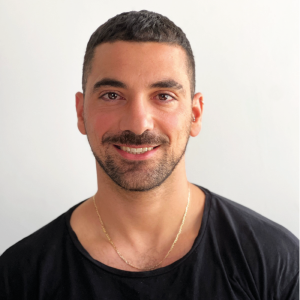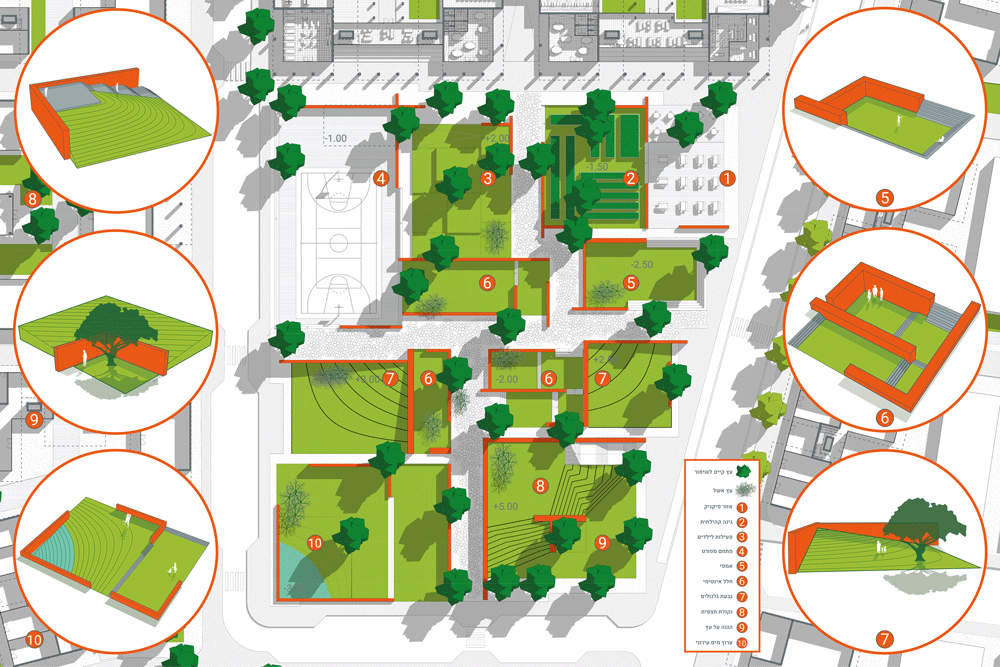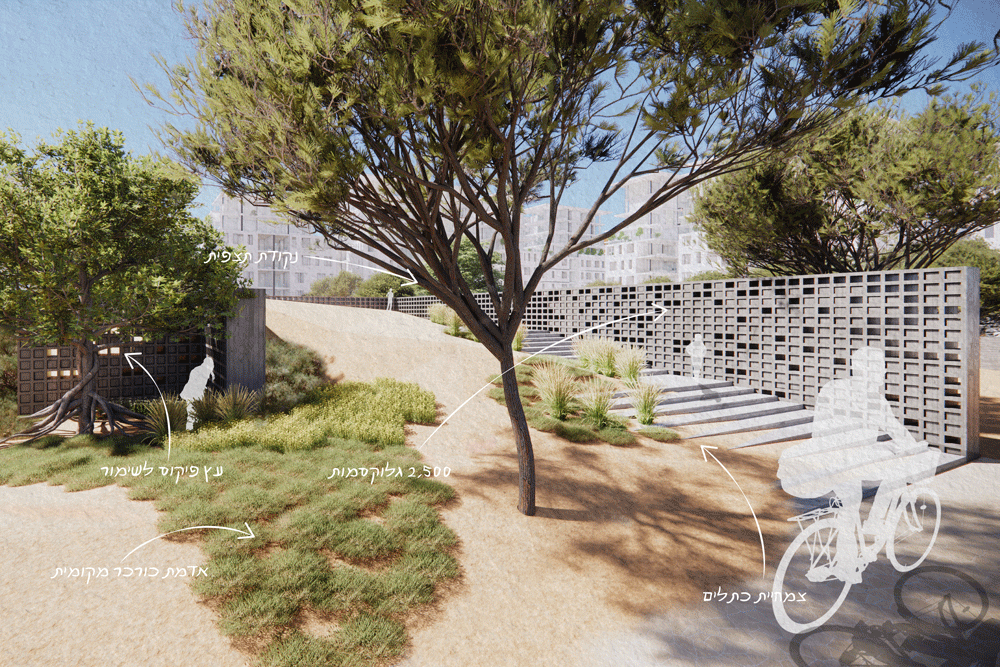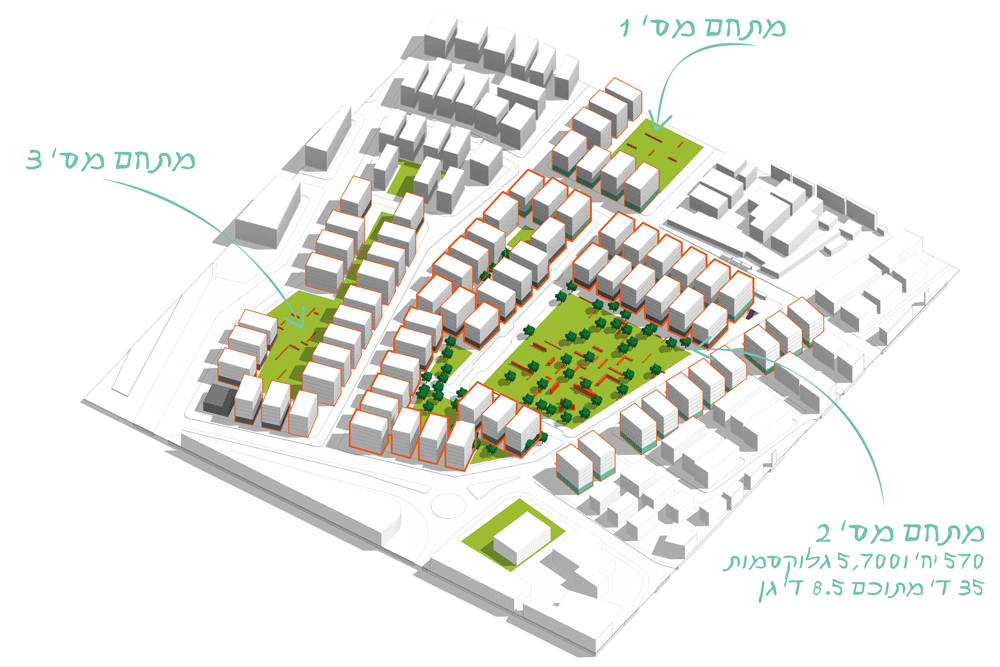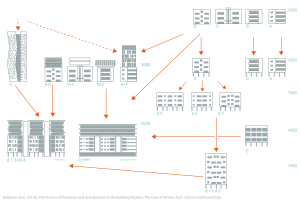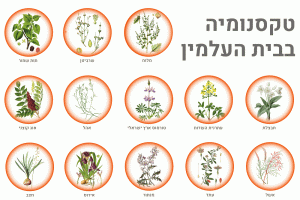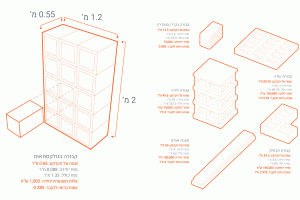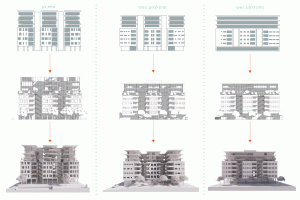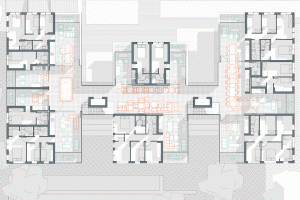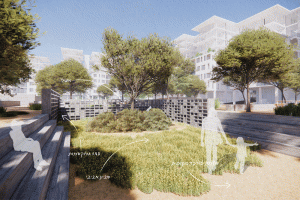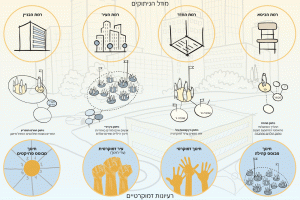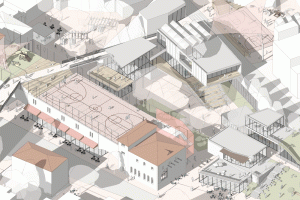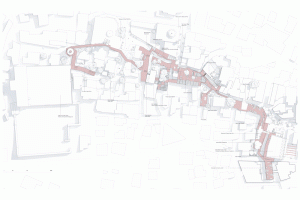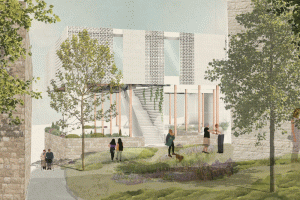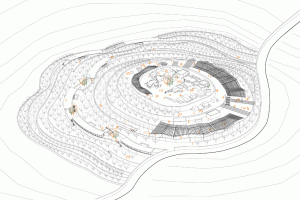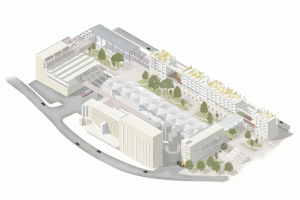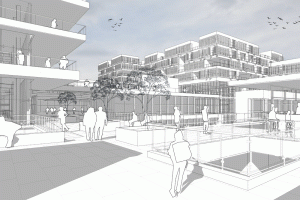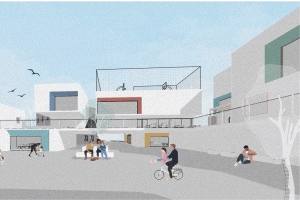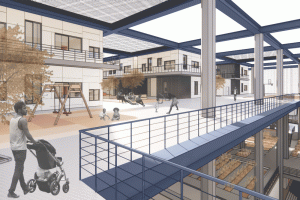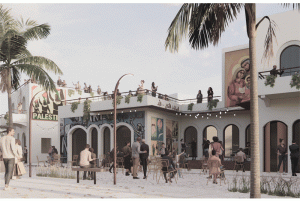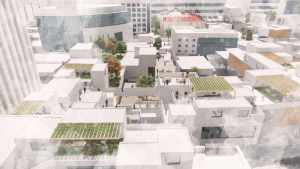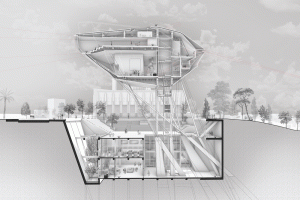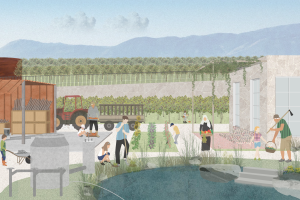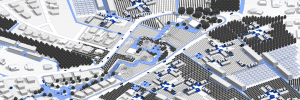Death and the city
The old cemetery of Tel Aviv, located on Trumpeldor Street in the heart of the city, is often referred to as Tel Aviv’s municipal archive. This name is fitting, as the cemetery serves as the final resting place for the founders of the Zionist movement, along with artists, politicians, rabbis, and martyrs of the Haganah and Etzel. One of the most fascinating aspects of the Trumpeldor cemetery is its diverse plant life. As a relatively undisturbed habitat, the cemetery achieves a unique harmony between the aging graves and native flora, including protected species such as the beach lily, narcissus, and lupine, as well as trees like Tamarix, Ficus, olive, and cypress. These plants thrive amidst the bustling city, creating a tranquil, pastoral atmosphere within the cemetery, while the graves lend the urban space a sense of sanctity and preservation.
Due to its garden-like qualities, the cemetery can be viewed both as a pocket garden for the surrounding residential area and as a distinctive urban feature in Tel Aviv—a cemetery within the city. Currently, Israel is facing a burial crisis, with most cemeteries nearing capacity due to inefficient land use in burial practices. Israeli planning authorities have proposed large, intercity cemeteries that can accommodate tens of thousands of graves. However, while this addresses space limitations, it continues the trend of consuming open land for burials. It deepens the divide between life and death without achieving a harmonious balance between the two.
Given that urban burial in Tel Aviv has not been possible for nearly 90 years, the question arises: what would urban burial look like today? The project aims to propose a burial method aligned with Tel Aviv’s identity as a Jewish yet secular, liberal, and innovative city. The project envisions an innovative burial platform inspired by an ancient Jewish practice known as “Burial in the Land of Israel.” This new approach suggests reimagining Tel Aviv’s pocket gardens as potential urban cemeteries, enhancing the city’s green spaces while addressing inefficient burial practices.
The proposed burial method involves two stages. In the first stage, the deceased would be buried in the old cemetery on Trumpeldor Street. After one year, the bones would be collected into a small box known as a gloksma, and the burial spot would become available for another deceased person. This 30×60 cm box, as described in ancient Jewish texts, would then be placed within walls designated for this purpose in one of the city’s pocket gardens. This approach fosters a new and meaningful connection between daily urban life and the inevitable reality of death, blending them into the city’s fabric.



